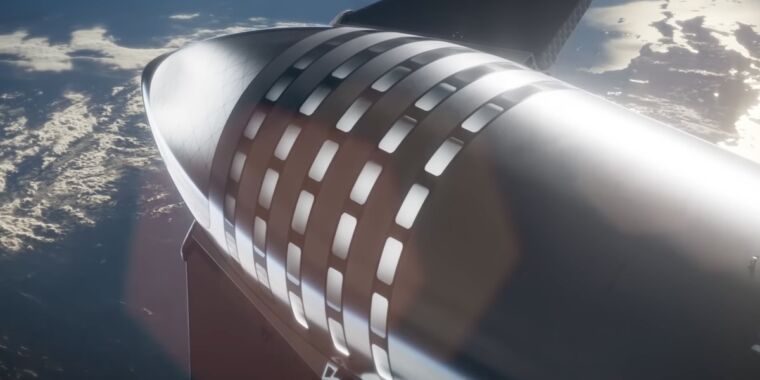
You’ve probably heard about SpaceX’s plans to use its giant new Starship vehicle to land people on the Moon and Mars, send numerous Starlink satellites or large telescopes into space, or perhaps even serve as a high-speed point-to-point terrestrial transport for equipment or people.
There’s another application for SpaceX’s Starship architecture that the company is studying, and NASA is on board to lend expertise. Though still in a nascent phase of tech development, the effort could result in repurposing Starship into a commercial space station, something NASA has a keen interest in because there are no plans for a government-owned research lab in low-Earth orbit after the International Space Station is decommissioned after 2030.
The space agency announced last month a new round of agreements with seven commercial companies, including SpaceX. The Collaborations for Commercial Space Capabilities (CCSC) program is an effort established to advance private sector development of emerging products and services that could be available to customers—including NASA—in approximately five to seven years.
This is separate from funded agreements NASA signed in 2021 with three industry teams led by Nanoracks, Blue Origin, and Northrop Grumman, each working on their own concepts for a commercial space station. Another company, Axiom Space, has a contract with NASA to develop a commercial module to be added to the International Space Station, with an aim to eventually use it as a centerpiece for a private-owned complex in low-Earth orbit.
NASA passed over SpaceX’s bid for a funded space station development agreement in 2021, identifying concerns about SpaceX’s plans for scaling its life-support system to enable long-duration missions and SpaceX’s plan for a single docking port, among other issues. The space agency isn’t providing any funding for the new CCSC effort, which includes the Starship space station concept, but the government will support the industry with technical expertise, including expert assessments, lessons learned, technologies, and data.
Apart from the SpaceX agreement, NASA said it will provide non-financial support to Blue Origin’s initiative to develop a crew spacecraft for orbital missions that would launch on the company’s New Glenn rocket. The agency also supports Northrop Grumman’s development of a human-tended research platform in low-Earth orbit to work alongside the company’s planned space station.
The other companies NASA picked for unfunded agreements were: Sierra Space’s proposal for a crewed version of its Dream Chaser spacecraft, Vast’s concept for a privately owned space station, ThinkOrbital’s plan to develop welding, cutting, inspection, and additive manufacturing technology for construction work in space, and Special Aerospace Services for collaboration on an autonomous maneuvering unit to assist, or potentially replace, spacewalkers working outside a space station.
Despite the lack of NASA funding, the new collaboration announcement with SpaceX laid out—in broad strokes, at least—one of the directions SpaceX may want to take Starship. NASA said it will work with SpaceX on an “integrated low-Earth orbit architecture” that includes the Starship vehicle and other SpaceX programs, including the Dragon crew capsule and Starlink broadband network.
“This architecture includes Starship as a transportation and in-space low-Earth orbit destination element supported by Super Heavy, Dragon, and Starlink, and constituent capabilities including crew and cargo transportation, communications, and operational and ground support,” NASA said.
Early days still
SpaceX’s Starship program is moving forward primarily with billions of dollars in private funding. The rocket is designed to eventually be fully and rapidly reusable, with a 33-engine booster stage called Super Heavy and an upper stage—itself known simply as Starship—to accelerate into orbit. Once in space, the Starship could deploy a payload of up to 150 metric tons or be refueled by a tanker vehicle—also based on the Starship design—for expeditions to more distant destinations like the Moon or Mars.
Starship is made of stainless steel and measures about 164 feet (50 meters) tall with a diameter of 29.5 feet (9 meters), wider than the fuselage of a Boeing 747 jumbo jet. Before SpaceX can move on to demonstrate in-orbit refueling, the Starship lunar lander, or an eventual Starship-based space station, the company needs to get the rocket into orbit. The first full-scale test flight in April did not reach space, but SpaceX officials were pleased with the lessons they learned and are preparing for another test flight that will attempt to reach near-orbital velocity later this year.

